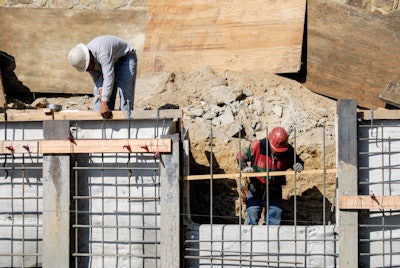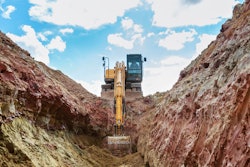
When it comes to profitability on the construction jobsite, you need to know if your projects are on track, even though risks abound: inability to fully staff, subcontractor performance failures, or heat-related illnesses. Construction labor shortages show no sign of abating. And with construction cost inflation, profit margins are becoming slimmer. Contractors need to get ahead of potential profit issues wherever and whenever possible.
Don’t lose valuable time combing through spreadsheets in the office or by performing what-if scenarios in your head. Instead, take a closer look at what’s happening on your jobsites. Jobsite data is key to understanding the state of your projects and making more money. Yet real-time jobsite data is often overlooked. Make more informed decisions by ensuring field data is factored in. Here are five critical areas to watch.
Five Critical Jobsite Areas To Watch
1. Worker attendance: At first, attendance data may seem obvious, but let’s dig a little deeper. This isn’t just about workers showing up on time. Often timesheets are only submitted at the end of a week or even two, and subcontractors submit invoices even later than that. In any case, contractors should go beyond sign in sheets and look for absenteeism trends, such as consistently calling in sick on a Friday or Monday. Failure to participate in safety screening upon site entry, or failure to attend tool talks increases risks to profitability, too. If you’re still using sign-in sheets to manage worker attendance, you’re missing out on an opportunity to use digital tools to reduce admin and spot trends that impact the health of the business and the worker in real time.
2. Certifications and Training: Having documentation of each worker’s skills and certifications and when those certifications were earned is important to know before delegating assignments. Without this knowledge, critical time and resources are often wasted as the worker’s mastery of certain skills becomes evident. And when it comes to safety, no site safety plan can be effectively managed without such data.
3. Daily Logs: The daily log is meant to be the most comprehensive source of information about the real-time status of a project. What often happens is that it’s quickly completed at the end of the day, creating a high potential of forgetting important information about worker status, supply deliveries and weather, all of which can delay progress. By digitizing the check in, and empowering workers to record observations throughout the day, a project manager can securely gather important information from everybody who checks into the jobsite and population and automate data capture, making the data immediately available to the entire company, not just the project team.
4. Subcontractor Management: Subcontractors are critical to most projects, yet managing them has its own set of challenges. This includes verifying the task start date, crew size, time worked and quality of performance. There’s also their ability and willingness to conform to the project’s safety, compliance and administrative requirements. Without a historic relationship with the subcontractor, and a record of its performance, it’s hard to be selective about which sub to select for future projects. A quick look-up of the sub, along with documentation and pictures from previous jobs helps to narrow the selection process.
5. Unnecessary admin: It’s not uncommon to have jobsite data sent back to the office, where it’s rekeyed into a variety of applications for HR, payroll and project management. Along with being time consuming and fraught with potential human error, unnecessary admin eats into the contractor’s profitability. Digital data processes, again, are the way to go. Low or no-code workflow solutions are readily available to make daily log data ready for accounting and HR.
Using Jobsite Data To Make Business Decisions
Digitizing and automating the simple yet time consuming data capture activities on a jobsite presents the contractor with a bigger picture view of a project while allowing them to dig into the details that chip away at profitability.
Getting those insights requires integrating jobsite data with other technologies being used by the contractor. For example, project management platforms like Procore and CMiC are great for managing all aspects of a job, yet they don’t always have the current and critical field data, because field personnel generally don’t like to perform data entry.
Here, too, digital apps can replace paper-based processes for managing workers and projects. Then, by integrating field data with a project management platform, the contractor can get ahead of issues such as labor and supplies and take action before it’s too late.
Capturing Jobsite Data For New Business Opportunities
Having easy access to field information is a great way to make each project more profitable. Here are four scenarios where jobsite data has helped contractors grow their business.
Expanded scope of work: Once a crew is onsite, it’s not uncommon to have the client request additional time and material (T&M) tasks. A lot of these conversations happen ad hoc. Not documenting the request quickly risks leaving money on the table, or, at a minimum, makes accounts receivable challenging when customers balk at paying an extra charge. T&M add-ons are often great profit enhancers, especially if the base project is a fixed price. One contractor was able to digitally document the additional T&M and increase the project’s scope by an additional five percent and its profitability by over 10 percent.
Property owners appreciate real-time awareness: Digital project data gives your customers a real-time view of their project, reducing tensions and driving confidence. Increasingly, project owners are ditching paper documentation for fully digital project management, from bid to build to punch list. Digital is now a valuable brand attribute of the best contractors.
More accurate bids: Using data from past jobs can help inform future bids, especially in terms of workers assigned to the job and their timely completion of each task. This “big data” scenario will only become effective over time when your firm has built up a considerable history of projects. But the payoff will be there waiting.
Expertise drives word-of-mouth referrals: Being able to see which projects are most profitable and narrow the list by industry, location or construction expertise enables a contractor to focus on the most lucrative opportunities and segments. Building a reputation in specific segments helps drive word-of-mouth referrals, requiring less time and cost marketing and bidding on less profitable opportunities.
What happens on a jobsite can make or break a contractor, so it only makes sense to capture data from the field to consistently track and measure profitability. And continue to use the data to make decisions that are in the best interest of clients and the contractor’s business.


















